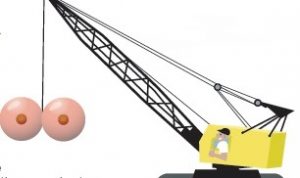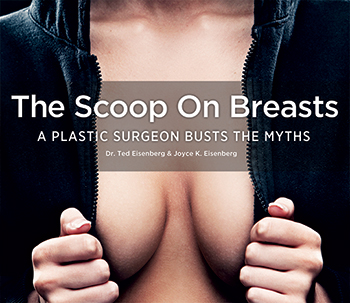How Does a Breast Lift Work?
Are you a candidate for a breast lift? Should you also get implants? What can you expect during recovery? Here are 7 things to consider:
Breast Lift Considerations
1. What a Breast Lift Can Accomplish
A breast lift, or mastopexy, raises and firms the breasts, giving them a more  youthful look. I do this by removing the excess skin, moving the nipples to a new, higher position, and suturing the remaining tissue together to create a sling – essentially a natural support bra – that raises and reshapes the breasts. I use the I.D.E.A.L. Breast Lift technique, which I created and have been teaching to doctors from around the world.
youthful look. I do this by removing the excess skin, moving the nipples to a new, higher position, and suturing the remaining tissue together to create a sling – essentially a natural support bra – that raises and reshapes the breasts. I use the I.D.E.A.L. Breast Lift technique, which I created and have been teaching to doctors from around the world.
2. What Your Nipple Position Reveals
To determine if you are a candidate for a lift, try the “pencil test.” Take off your bra and look in the mirror. Place a pencil horizontally along the crease under your breast where your bra band would rest. Does your nipple – not your areola – rest above, below, or at the pencil?

In medical lingo, ptosis is the word for a drooping body part; breast ptosis is classified as mild, moderate or severe. Hint: The “p” is psilent.
If your nipple is above the pencil, relax. You are probably not a candidate for breast lift surgery. Use some of the money you save for new, uplifting bras.
If your nipple hangs below the pencil, your breasts would be considered moderately to severely ptotic (or droopy) and you would need a breast lift to raise and reshape your breasts.
If your nipple is at the pencil and your breasts are mildly droopy, it’s a borderline situation. You might get a good result with an implant alone because an augmentation can give the illusion of a lift. As the implant fills out the upper portion of the breast, it also fills out the lower portion, which makes it appear as if the nipple is located higher on the breast. After about 9 months, when the implant has settled, you’ll have a better idea if you are perky enough. You can always get a lift later if needed.
3. Your Breast Size After a Lift
After a lift, your breasts will be the same size as they were before surgery, because only excess, stretched skin is removed during a breast lift; no breast tissue is taken away. You’ll look exactly how you look before surgery when you are wearing a good bra.
4. Going Bigger
To determine if you need a lift and implants, put on your bra and look in the mirror. If you are satisfied with the size of your breasts, then a breast lift alone might be the right procedure for you. If you wish your breasts were bigger, you are probably a candidate for a breast lift and implants (an augmentation mastopexy).
5. Post-Op Discomfort
Women report minimal discomfort after breast lift surgery. That’s because a breast lift involves removing only loose, stretched skin. If implants are added at the same time, the skin and muscle will be stretched, which may cause a little more discomfort.
When a Philadelphia DJ came to me for breast lift surgery, she recorded her experience from start to finish. Watch her intimate video blog.
6. Returning to Work
More than 90 percent of my patients are back to work on the fifth day after surgery if they work in an office setting. Women whose work requires lifting, pushing or pulling usually go back to work toward the end of the second week. They might be a little sore at the end of their workday, but by Week 3, they feel pretty much back to normal.
7. Breastfeeding in the Future
It’s very likely that breast lift surgery won’t affect your ability to breastfeed because your milk ducts, which run from the mammary glands to the nipple, are not disturbed. Only skin from the perimeter of the areola is removed, and there are no milk ducts there.
Titbit: In medical lingo, ptosis is the word for a drooping body part;
breast ptosis is classified as mild, moderate or severe. Hint: The “p” is psilent.




 CLICK HERE TO BUY
CLICK HERE TO BUY







